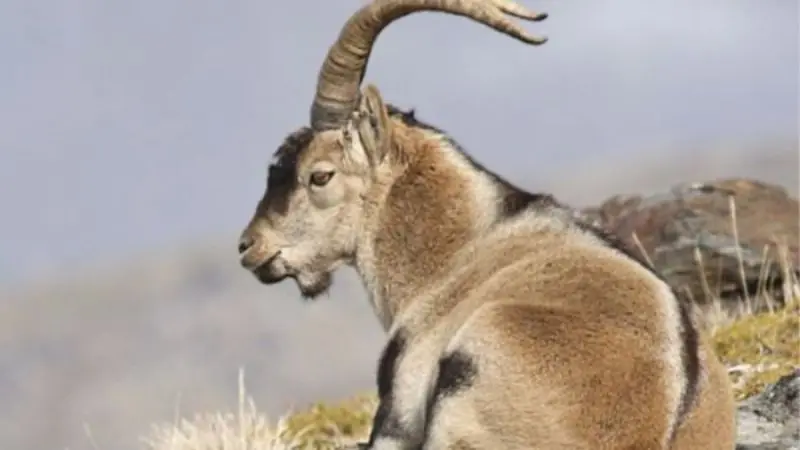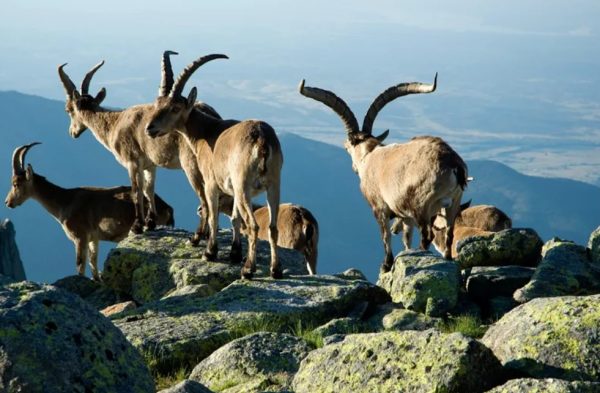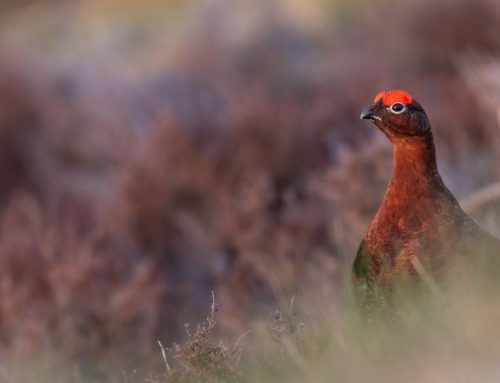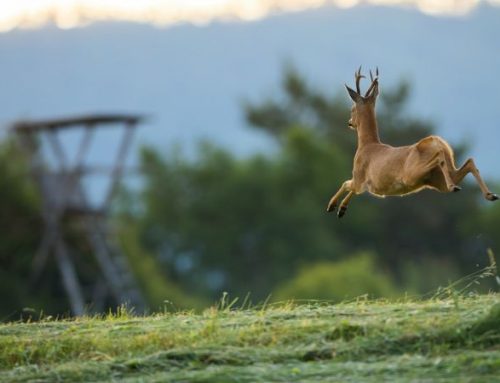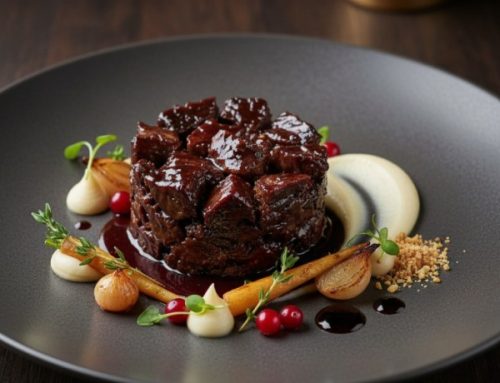Do you want to travel to a place that perfectly combines the perspectives of both a hunter and a tourist?
Well, if your answer is yes, you’ll definitely find what you’re looking for in Spain!
Enchanting spaces full of contrasts where you can forget your worries and focus solely on living in the moment.
Mountains, volcanoes, forests, rivers, valleys, lakes, and cliffs – all areas where nature reigns supreme. Here, the hunter will experience the hunt in an atmosphere that evokes the ancient flavors of challenge, bringing a sense of renewal.
Spain is a country with a rich hunting tradition, both for small and big game. It’s a destination that will allow you to experience the thrill of a hunting trip close to home: a direct flight from Italy to Spain takes about 2-3 hours, and you’ll be ready to take up your weapon!
Montefeltro aims to provide you with real and unique emotions, offering you the opportunity to go to Spain and hunt Ibex, the Spanish mountain goats, by organizing the trip according to your needs: from booking the flight to welcoming you at the hunting location, ensuring that each experience is unique and unforgettable.
The goats that Montefeltro offers for hunting in Spain are Beceite, Gredos, Sierra Nevada, and Ronda. These goats live in mountain ranges from north to south and east to west, differing in specific characteristics such as shape and size.
Ibex Beceite
The Ibex Beceite is one of the wild goats found in Spain, reaching altitudes of 300 to 1200 meters on the heights of the eastern coast. Nearby cities include Valencia and Barcelona.
The hunt for this ibex takes place in areas ranging from shrubland to barren and rocky zones.
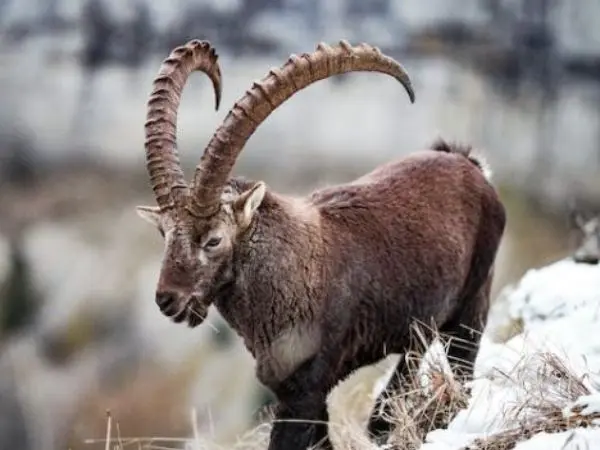
As usually happens in the game of life in the mountains, the ibex has become shy and has developed extremely acute senses because it has been chased for millennia by every predator: hearing and smell are extraordinary and the sight is indescribable!
All of this makes the Beceite a worthy adversary and a highly sought-after trophy.
Ibex of Gredos
To the west of Spain lies the Sierra de Gredos, a mountain range that is part of the Central System, situated between the provinces of Ávila, Cáceres, Madrid, and Toledo.
This area is home to a subspecies of the Iberian ibex, known as the Gredos Ibex.

It is characterized by a dark coat and large, ringed horns with a rough surface. The growth of these horns is proportional to the animal’s age, adding one ring each year.
It is known for being the largest of the four Spanish ibex species in terms of size.
Ronda Ibex
The Ronda Ibex is found in southern Spain, specifically in the province of Malaga. Morphologically, it is the smallest of the four.
Its horns grow vertically in a “V” shape and then curve backward with a spiral twist.
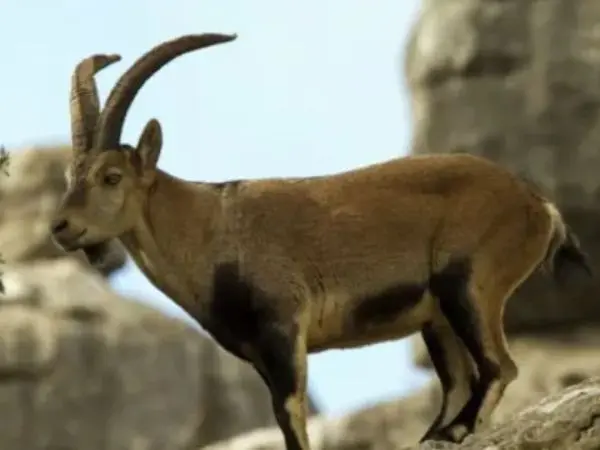
The hunt takes place in the Ronda Mountains, allowing for a perfect blend of hunting and tourism, thanks to the cultural and recreational activities in the area.
It’s an ideal destination for those who decide to travel with family or friends!
Sierra Nevada Ibex
Also known as the Southeastern Ibex, the Sierra Nevada Ibex has an intermediate size compared to the others: smaller and lighter than the Beceite but very similar to the Ronda.
The size of their horns varies by region, with the specimens in Sierra Nevada generally having some of the largest horns. These horns have a smooth surface and are almost perfectly round in cross-section.
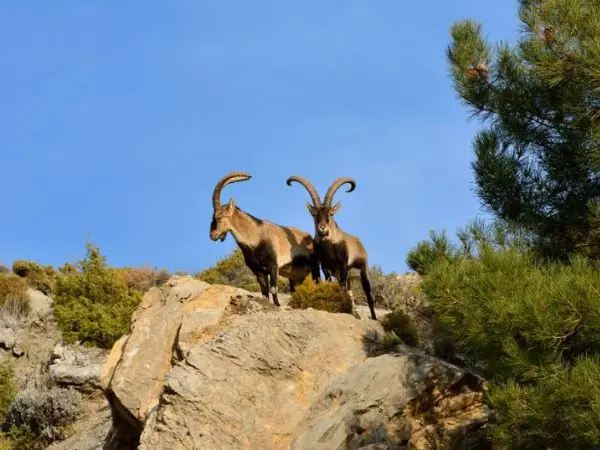
The Sierra Nevada Ibex is hunted in the mountainous regions of the Sierra Nevada National Park, Sierra de Lujar, Sierra de Huetor, Santillan, and Sierra Arana, in the autonomous community of Andalusia.
The best season is during the mating period, which starts in early winter—November and December.
In these mountainous areas, where rocky terrains and cliffs alternate in a rapid dance, you will witness breathtaking landscapes. While you engage in exceptional stalking along steep paths, often only accessible on foot, you will see agile goats that challenge the void and the verticality of the walls with incredible ease.
A Day in the Spanish Mountains: The Timeless Pursuit of the Ibex
In Spain, hunting the ibex is more than just a sport—it’s an experience that awakens the soul, placing you in a landscape that seems to whisper of ancient legends and rugged adventure. Each day begins with the soft glow of dawn breaking over the jagged mountain peaks, casting golden hues across the vast Spanish sierras. As the morning mist rises, the silent, towering forms of these mountains remind you of the age-old connection between humans and the wild, a bond strengthened by the shared resilience to face the unpredictable forces of nature.
Our day begins with a quiet hike under the guidance of local trackers, men whose families have known these hills and valleys for generations. Their whispers and gestures point us forward as we step carefully through narrow, winding trails, surrounded by the towering cliffs and rough stone. The cool mountain air is refreshing, yet every step is infused with anticipation. We scan the slopes and craggy ridges, looking for the first sign of movement, a flicker of horns or the graceful silhouette of an ibex against the sky.
Spain is home to four species of ibex, each with its own characteristics and distribution, but today, we’re after the mighty Gredos ibex. Known for their impressive, arching horns and the regal way they carry themselves, these creatures possess an unmatched elegance. Spotting one is a sight that leaves you breathless—a solitary figure standing proud and unafraid, watching over its domain. The Gredos ibex lives in some of Spain’s most beautiful, rugged regions, and each sighting feels like a privilege, a glimpse into a world that has remained largely untouched by time.
As midday approaches, we pause to savor a traditional Spanish lunch packed in our satchels, a meal of jamón ibérico, manchego cheese, and fresh bread. This is not just sustenance but a moment to pause and drink in the majesty of our surroundings, the wild, endless landscape stretching far beyond our view. The stillness is interrupted only by the occasional call of an eagle soaring overhead or the distant rustle of ibex moving between rocks, hidden yet ever-present.
In the afternoon, our guide spots a herd grazing on a high ridge, and our breath catches. Slowly, quietly, we make our approach, climbing the steep incline, each step carefully measured to avoid slipping on the loose stones. The ibex are watchful, their keen senses finely tuned to any hint of intrusion. As we draw nearer, the adrenaline surges. The guide signals to prepare, and I steady my rifle, taking aim at a mature male, its horns sweeping back in perfect symmetry, a testament to years of survival in this unforgiving landscape.
With a deep breath, I pull the trigger, and the sound echoes through the valley. The ibex staggers, then falls, and a profound silence follows. Approaching the animal, there is a sense of reverence. This is a creature that has spent its life conquering these mountains, navigating terrain where few dare to tread. It is a worthy adversary, and in this moment, the thrill of the hunt blends with a deep respect for the life I have taken.
As the sun begins to set, casting long shadows across the mountains, we make our way back down, the weight of the day’s journey settling in. The golden light fades, replaced by the soft glow of twilight, and we return to camp with hearts full of memories, forever bound to these mountains and the creatures that call them home.
Hunting ibex in Spain is a journey of spirit and endurance, where every sight, every sound, every sensation is heightened by the raw beauty of the wild. It’s a day spent not only chasing game but embracing an ancient tradition that lives on in the mountains, an adventure that brings us closer to nature and, perhaps, closer to ourselves.

